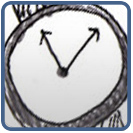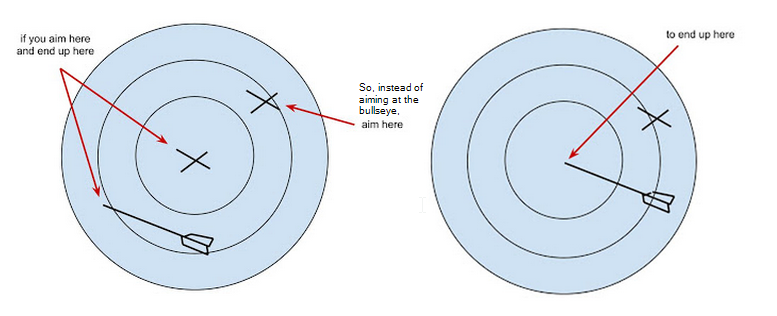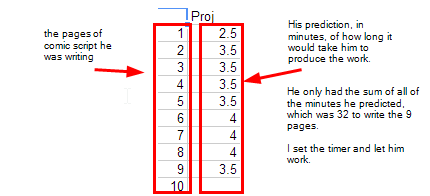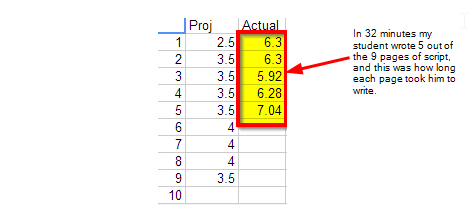
GO TIME YOURSELF! Try the worksheet that is designed to help new and aspiring artists gauge their ability to create within a period of time.
As an artist, it’s important to develop a strategy for increasing productivity. It’s a necessary evil. Artists are driven by emotion, right? How can a person like that be expected to adhere to a schedule? One with goals and deadlines?
George Lucas. John Lennon. Michelangelo. Alan Moore. JRR Tolkien. Creative geniuses often develop strategies to help them stay focused on their tasks. How do they do it?
Perhaps the more important question is: How did they start?
When I was a kid, I spent six years doing competitive, Olympic-style, archery. The thing that stuck with me more than anything else was the method for figuring out how to aim. The idea was basically this:

Learning to adjust your aim applies to the artistic practice because it forces you to analyze and understand your abilities. In archery, any number of factors might cause you to miss the bullseye: wind, muscle control, environmental distractions, or any number of other factors. Everything must be taken into account in order to hit the target. In art, similar factors might prevent you from achieving the desired result. What separates the expert (artist or marksman) from the amateur, is that experts tend to assess their own abilities and use that assessment to change weaknesses into strengths. In art, as with archery, you can only reach the next level through copious amounts of practice.
A former student of mine, age 30, was making a comic for the first time. I had him do a basic exercise with the goal of calibrating his productivity, in order to set realistic deadlines. The activity required him to estimate the length of time it would take to write a 10-page comic.
These were his estimates:

Time started and he began to write. The clock was set for 32 minutes (the total estimated time). As the minutes ticked by, we recorded the actual length of time it took to write each page.
These were the results:

Predictably, his estimates were off. This activity demonstrates how faulty the brain can be when it comes to estimating creation time. This is why time can feel like it passes quickly when you create, and at a glacial pace when you face mundane tasks.
Initially, these numbers discouraged my student (as I believe they would any new artist). I asked him to consider what knowledge could be gained from the activity. We were able to conclude the following:
1. He created five pages in the time allotted for nine. With this information, he knows to expect a rate of five pages every 32 minutes.
2. Some pages were harder to write than others. In the future, he should allow extra time to compensate for this.
3. This activity did not provide enough information to accurately plan future projects. Even so, it indicated trends that could be acted upon to improve future planning.
The more experience I gain with project scheduling, the more I find that gathering this data helps me to maximize my time and be creative on a schedule. Exercises like the one above can help you to channel your perfectionism into productivity.
makingcomics.com
Patrick can this exercise be translated to estimated times drawing pages?
of course. What I would look out for, however, is trying to sub-class the kinds of pages you are penciling. For instance, a full page splash can take longer than a page with nine panels. I would probably average your times in total, but also be aware of the discrepancy between the two.
Thank you for this article! It like to break things down into math; it makes it simpler and clearer to reach one’s target.